To the Man Named "Praise God"

It was lunchtime when we met you in the middle of Pretoria’s Church Square. We’d just come from the Kruger Museum, the kind of house museum that smells of mothballs and ossified racism, its high-ceilinged rooms filled with beer steins and banners dedicated to a questionable local hero: Paul Kruger. Depending on who you ask, Kruger—19th-century defender of Afrikaner culture and eventual president of the South African Republic—is either an enlightened conservationist or an illiterate xenophobe.
We slipped out through the museum’s garden, plagued by that musty air and the stale hero narratives. There, my husband John and I found a secluded bench—right behind Kruger’s private train car—and ate our peanut butter sandwiches, listening to the unfamiliar twitter of South African birds beneath the dull roar of traffic.
Cutting short our relief at leaving the museum, Kruger reappeared just two blocks over. Cast in bronze, atop a plinth, Kruger’s image stolidly anchored the center of Church Square. Bronze Kruger sported a top hat, a cane, and a menacing glower—this country’s equivalent of a Confederate general still standing in the American South. At the statue’s feet, urban renovation raged. The chaos of construction brought to mind how Nelson Mandela described one of South Africa’s brutal Apartheid-era gold mines: “a war-torn battlefield.”
Against the noise, dust, and midday sun, I struggled to frame a shot of Kruger that looked much like anything. With elbows pinned to my sides, back slumped, I felt self-conscious and a little abashed. Why was I taking this picture? Was it historical documentation or vapid cultural voyeurism? And to an onlooker, how did my framing of Kruger look? Like veneration?
So when you called out to me, it was as though you’d read my mind.
“Why don’t you take a picture of us? We’re the real heroes—ha!”
We turned to see you and your friends leaned against a bench. You were decked in blue and orange jumpsuits with neon green reflective bands—the ubiquitous “safety wear” of South Africa’s working class, worn by women and men in every job from agricultural worker to archivist. Construction workers on lunch break, you wanted to know where we were from, what we were doing in Pretoria.
I fumbled around for an explanation. Over the next several months, I’d perfect the elevator pitch of my project, but now, during the second week of a yearlong trip around the globe, I hadn’t processed my new situation: I’d been granted a postdoctoral fellowship to study industrial heritage sites. In other words, I was to become a nerdier version of the New York Times’ “52 Places to Go” reporter—if, that is, the “places” were abandoned mines, repurposed factories, and gentrifying port towns. My husband John would accompany me for the first half of my trip, along a route that would bring us from Johannesburg to Santiago. In the beginning of the journey, I fancied myself a flâneuse of the Anthropocene, a detached journalist on the trail of forgotten places. My itinerary was eclectic and overly ambitious: a mash-up of UNESCO sites and Atlas Obscura ruin porn. I tried to travel incognito, a scholar disguised as a tourist, my nylon backpack crammed with sink-washable, stink-resistant clothes. But in the end I was woefully green, mostly monolingual, and just as dependent on Lonely Planet as everybody else.
To you, I said none of that. I just told you I was looking at landscapes of South Africa’s historic mining economy—that dark, subterranean vein winding through slavery, apartheid, and democracy. A glittering line entangling Africans, Brits, and Boers—like Kruger, looming above us here, our improbable conversation starter.
John and I stood before you with arms crossed, shoulders inching towards our ears, telegraphing the particular discomfort of first contact with strangers. Did you want something from us? Was there some angle to your questions? But it soon became clear you just wanted to talk. We uncrossed our arms, relaxed into the banter, and sat down on the curved bench in whose shade you and your friends had sprawled.
“I tried to travel incognito, a scholar disguised as a tourist, my nylon backpack crammed with sink-washable, stink-resistant clothes. But in the end I was woefully green, mostly monolingual, and just as dependent on Lonely Planet as everybody else.”
You were the conductor of this conversation and we were happy to follow along, compelled by your wide, easy smile and your quick wit—the kind of charisma that commands a room, a party, a crowd. I wasn’t at all surprised to hear that you and your friends religiously watch The Daily Show with Trevor Noah; you pivoted between wry banter and probing questions like the most skilled of TV hosts, all the while translating for your friends. Like many other people we met in South Africa, you wanted to know what we thought of our current president. Where we saw catastrophe and the impending end of American democracy, you saw mere caricature—a cartoon version of a dictator, a dumbed-down P.W. Botha, lacking the ideological coherence and mendacity of a true totalitarian.
Shadows lengthened on the square and a sunburn began to bloom on my bare arms. We asked how we should spend the rest of our time in Pretoria, and your crew agreed that the Union Buildings were worth a look. In planning our day, I’d ruled the Union Buildings out—too formal, too British, too colonial—and I wondered why you seemed so proud of them.
We took a photo, shook hands, exchanged names. You told us we would not be able to pronounce your Zulu name, but that in English it meant “Praise God.” As we parted ways, John asked how the future looked for you. You shrugged and said, “It’s survival, my man. We just try to survive.”
A year later, I think of you. I wonder whether you have a job, whether the Church Square renovation is at last complete, still surveyed by the unblinking countenance of old “Pa” Kruger. I wonder whether you’ve been watching Trevor Noah through our perplexing impeachment hearings and the early days of a new election. When you and I crossed paths that day, I had four continents ahead of me still, hundreds more strangers to meet.
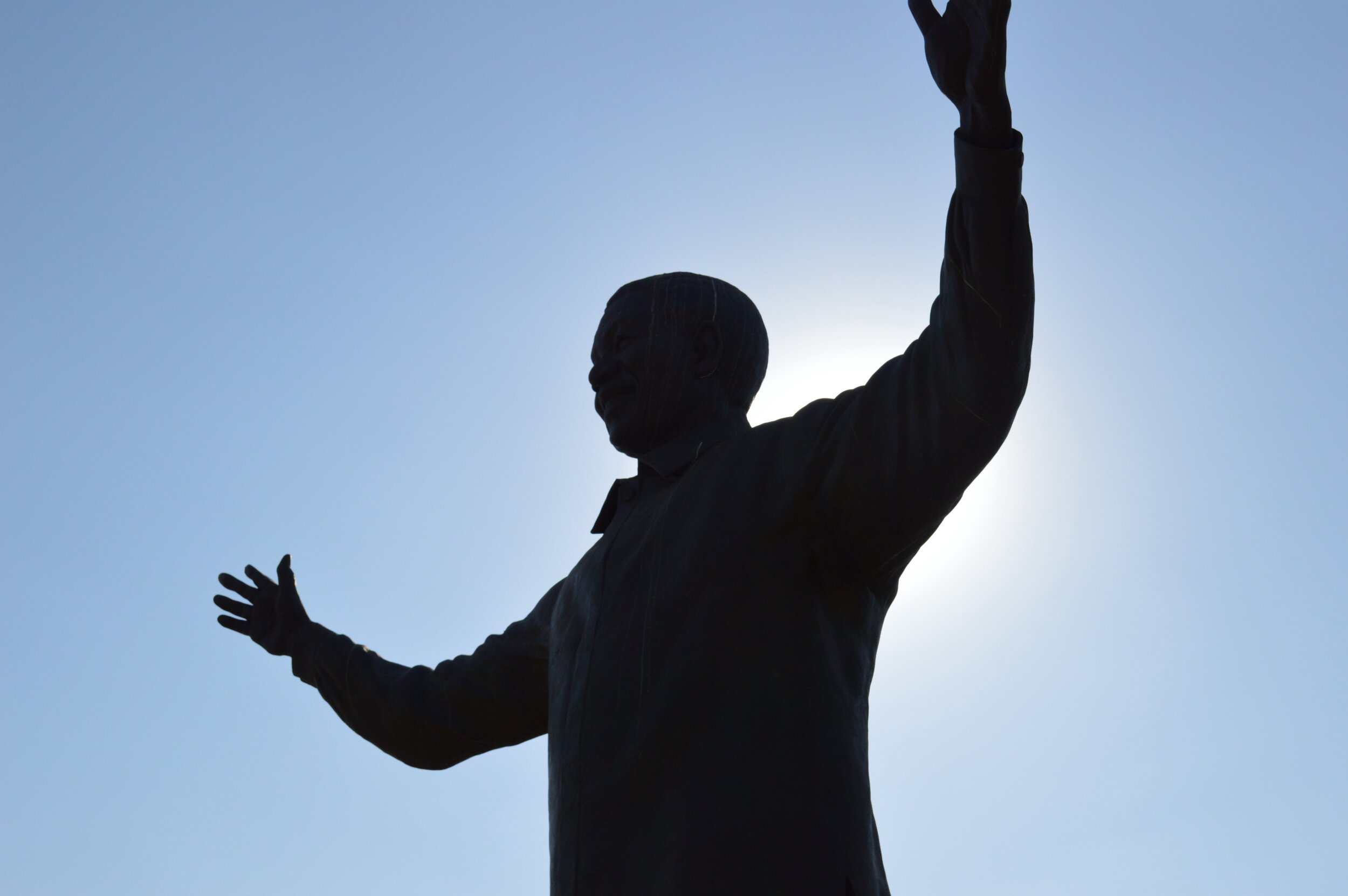
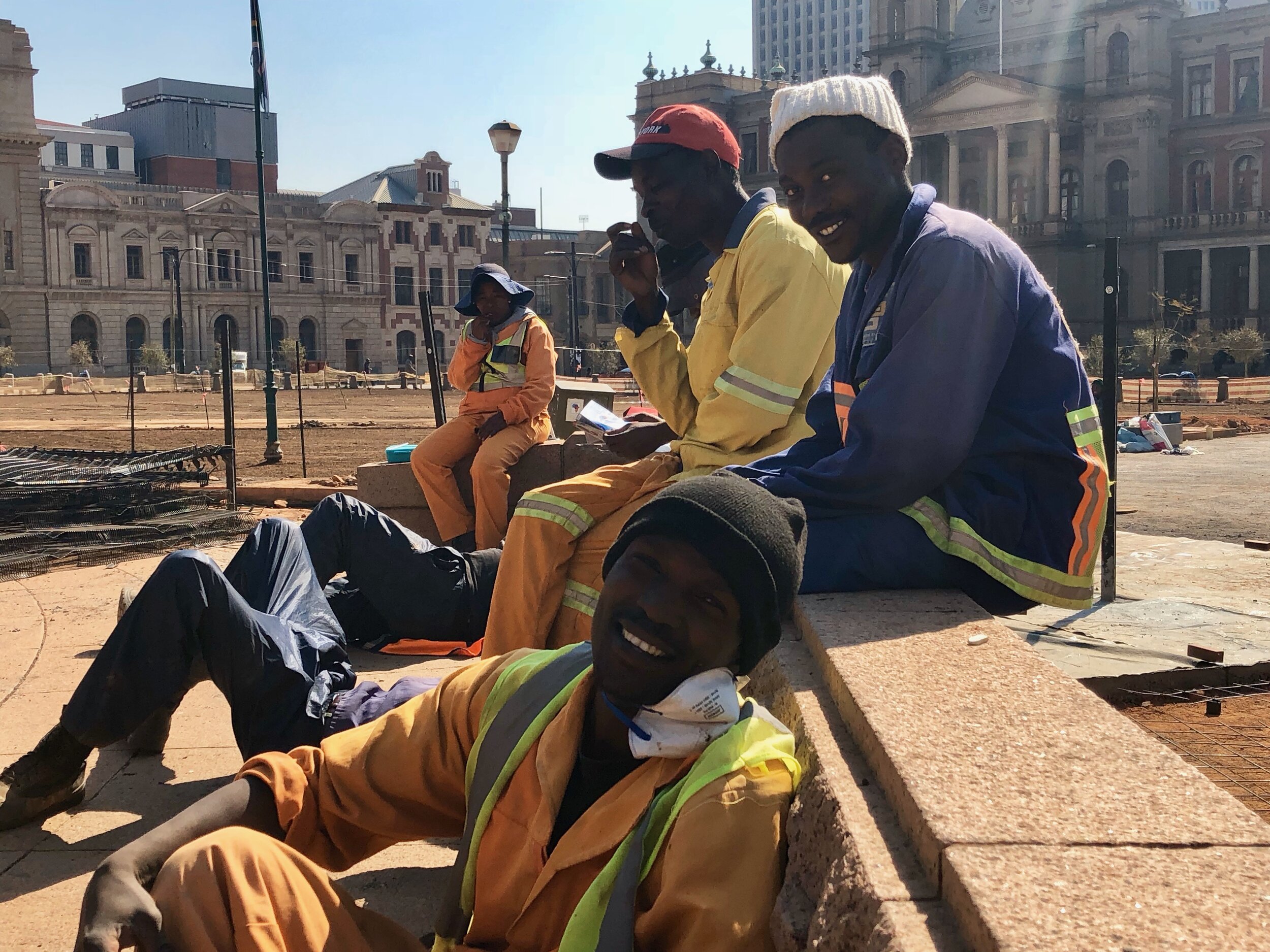
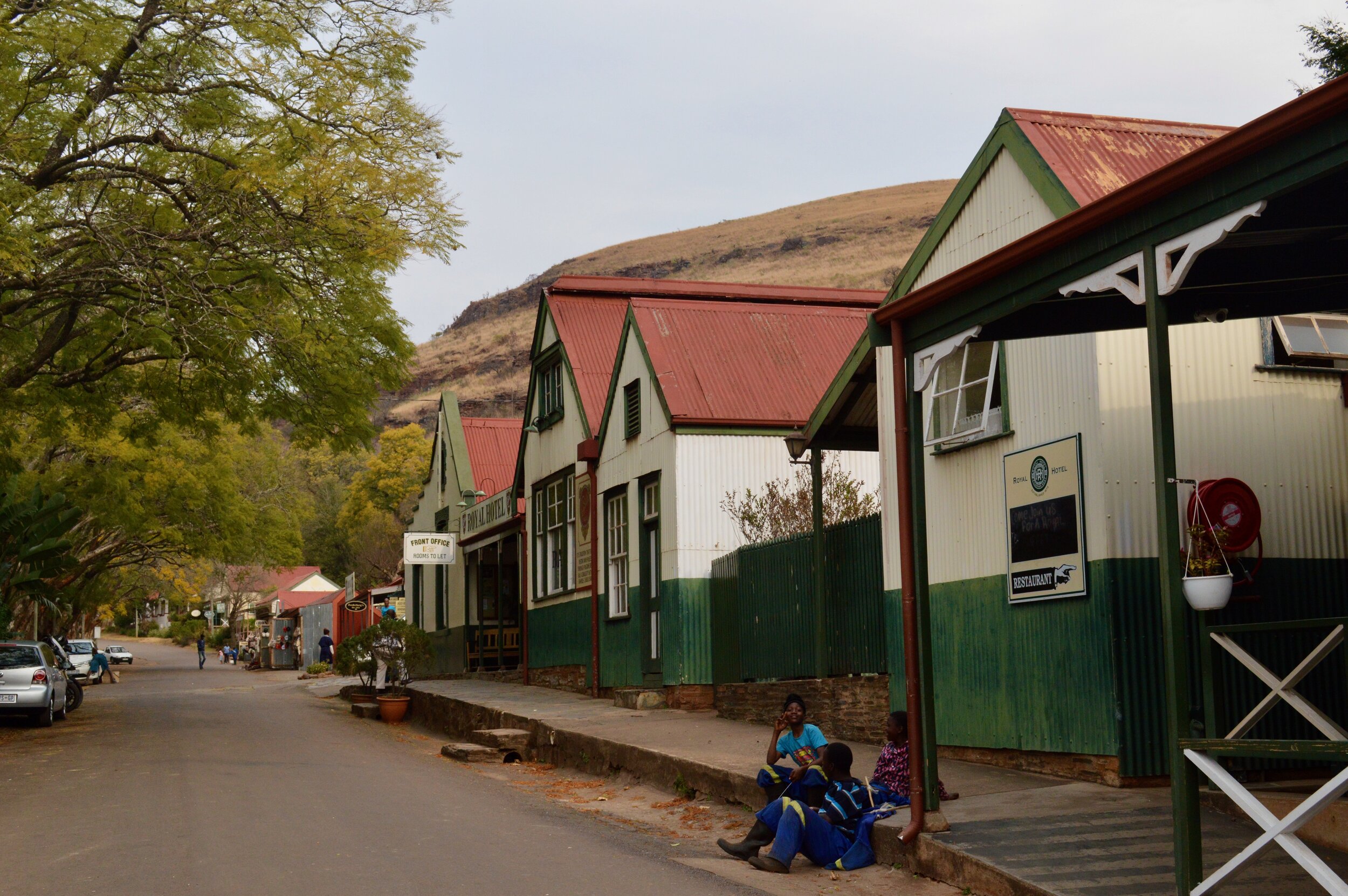
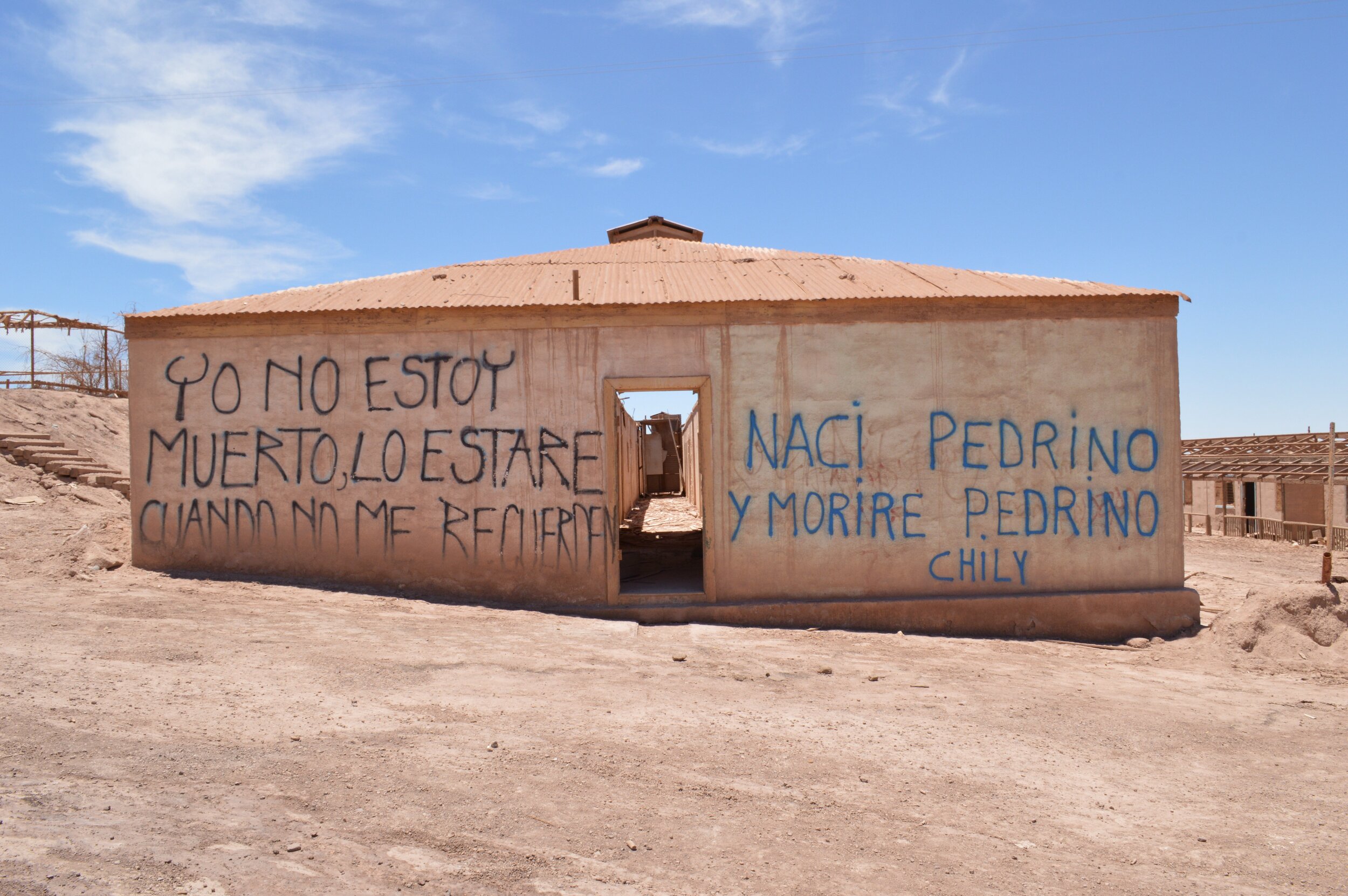

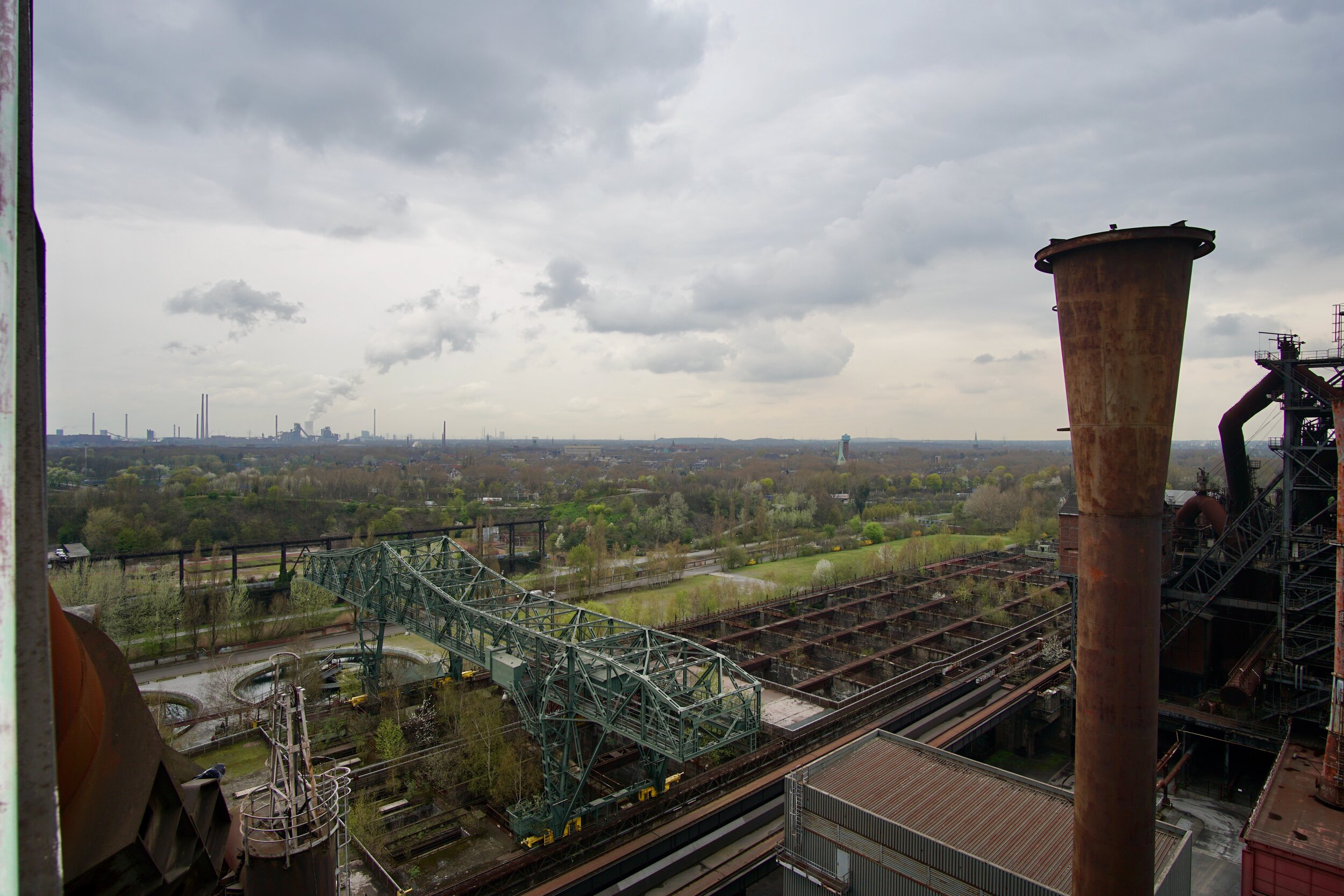

Photographs courtesy of Sarah Rovang.
In so many places I would go on to visit, the only material remnants of extinct industrial economies were the husks of buildings and fossilized machines. Across the globe, certain motifs recurred: lonely smokestacks standing tall amidst rubble, the diaries of former workers on display at the local historical society, warehouses reborn as malls and condos. But exactly how each place transitioned to post-industrial life—that changeover looked starkly different everywhere. The particulars of obsolescence were rooted far more deeply, in patterns of culture and belief grounded in each place.
In South Africa, where race still defines class and opportunity, that transformation looks like you: a could-be primetime host working construction. It’s also an old gold shaft in a theme park, cut open so that visitors can walk fully upright. In Japan, it’s a hollowed-out shopping arcade in a depopulated port town, where the few remaining children ride their bikes to avoid the rain. In Chile, it’s the empty swimming pool once used by nitrate miners in the high Atacama Desert, part of a desiccated ghost town now haunted by the memory of water. In Germany’s Ruhr Valley, it’s a coal and steel plant transformed into a skateboard park and concert venue, an industrial jungle gym where the blast furnaces are reduced to climbable sculpture. And here in the U.S., it’s that shuttered steel refinery that my family passes on I-25 in Colorado, where every time my mother looks out the car window and says, “It’s really such a shame.”
After we left you, we went to the Union Buildings. Framed beneath a curving colonnade, a statue of Mandela towered over the hillside. Is that what you wanted us to see? What you hoped I’d photograph? Mandela smiles broadly, extending his hands to either side. It’s a gesture of victory and open embrace. The panorama spanned by his arms reveals South African history in all its nuance and messiness. In the distance, the sinister pro-apartheid Voortrekker Monument appears almost adjacent to Freedom Park, where the names of liberation heroes are carved. Beyond lie the posh northern suburbs of Johannesburg, and further south, the city’s old gold mining slag heaps, piled up like savage mountains and nearly invisible in the afternoon haze.
ABOUT THE AUTHOR
Sarah K. Rovang is an architectural historian, curator, and educator. She holds a Ph.D. from Brown University in the History of Art & Architecture. Sarah specializes in 20th-century American architecture and material culture with particular attention to technology, modernization, and the rural landscape. A recent Research Fellow at the Georgia O’Keeffe Museum, Sarah returned this summer from her year of international travel for the Society of Architectural Historians. Catch up with her global travels here.
Read Sarah’s “Behind the Essay” interview in our newsletter.
Header photo by Ant Rozetsky

